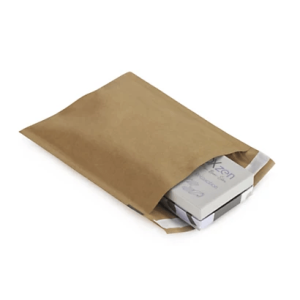+16.8% growth, and 560 million transactions: these are the monumental key figures for e-commerce in the third quarter of 2022, closing a rich year for this sector.
While e-commerce is now an undeniable part of consumers’ daily lives, competition is fierce for anyone who wants to make a name for themselves. This is where it becomes crucial to look at the e-commerce trends that are driving the market, in order to surf on them!
Discover here the 8 unavoidable e-commerce trends of 2023, and the advice to integrate them into your digital strategy.
The economic crisis: a trend that will impact e-commerce
The Covid-19 pandemic continues, war breaks out in Ukraine, global supply concerns, changing trade agreements between countries: the year 2022 will have been full of political and economic upheaval, which will continue to have an impact on the e-commerce sector in 2023.
However, their customers’ expectations have not changed. They still want to benefit from always full stocks, low prices, fast delivery, and fine-tuning of the user experience they have.
So how do you, as an e-tailer, meet this challenge? By being more agile than ever, both in your sourcing strategy and in your choice of logistics providers. The key to success in 2023? Making sure your supply chain is adaptable to all kinds of concerns that may arise during the year.
Second-hand and eco-responsibility: still growing e-commerce trends
The second major e-commerce trend in 2023 is no secret: it is eco-responsibility, which your customers want to respect more than ever when they buy their products, both in physical outlets and in e-commerce.
Indeed, a YouGov study from 2020 already indicated that 80% of French people say they are sensitive to brands that offer more ecological packaging, and that 99% orient their daily purchases according to this concern. This is also reflected in the rise of second-hand e-commerce in 2022, with sites that surf on the refurbished or second-hand trend.
And, if this ecological trend continues to gain momentum among buyers, it requires e-tailers to transform (sometimes radically) the way they offer their products.
So, in 2023, think about implementing truly eco-responsible logistics for your e-commerce site. Your entire strategy must integrate the notion of ecology, from your procurement strategy to the carriers and delivery methods you offer your customers.
Amongst the elements to take into account, don’t forget to review your packaging strategy, so that it is ostensibly ecological, without detracting from the customer experience it offers.
For example, you can look at solutions such as :
 |
Manual palletising stretch paperManual palletising stretch paper, made from natural kraft paper, rather than traditional plastic palletising film |
 |
Padded kraft paper sleeveswhich protects your products just as well during shipping as traditional petro-sourced plastic sleeves |
 |
Cellulose packagingcellulose packaging, a biosourced material (i.e. from renewable natural resources), which is both a protective and valuable alternative to traditional petro-sourced plastic |
The e-commerce of rental: when retail lends its products
For several years now, we have been seeing the development of e-commerce sites in the retail sector with a tempting promise: to offer customers the opportunity to rent their products (new or reconditioned), rather than buy them. An e-commerce trend that is set to grow in 2023, so much so that it is in line with respect for the environment and purchasing power!
However, this trend requires very specific logistics, both in terms of web marketing and customer returns.
The best practices for surfing the rental e-commerce market will therefore be to :
- Implementa clear and precise e-commerce return policy, including information on the condition of the products and the return deadlines to be respected.
- Explain your concept well in all your communication media, with pedagogy, to convince customers who are still hesitant to switch to this mode of consumption.
- Send products in returnable packaging, such as returnable packaging, which protects the goods during two shipments

Hipli packages are the perfect answer to these return order requirements! Designed and tested to be shipped up to 100 times, these reusable packages are used by the e-retailer to ship their products, and then reused by the customer to return either the products or the packaging alone. The packages then go through a “parcel hospital” to be repaired if necessary, before being put back into circulation.
Available in pouch or box format, they adapt to the size and weight of your goods, for shipments that are both eco-responsible and customer experience oriented.
Alternative payment methods: a growing trend
As e-commerce technology advances, so do consumer expectations. By 2023, your consumers will expect any retail site to offer them a variety of payment methods, giving them a choice in how they are charged.
While payments via Google Pay or PayPal have become quite common, a new e-commerce trend is emerging: Buy Now Pay Later , which often involves offering payment over time. It is estimated that the Buy Now Pay Later market will be worth more than 3,000 billion dollars worldwide by 2030!
So think about diversifying the payment methods available on your e-commerce site, to make your sales tunnel even more fluid. These alternative methods become sales arguments that should be highlighted on your site.
Social commerce: when sales are made on social networks
The year 2022 was marked by the emergence of a strong e-commerce trend: social commerce, i.e. the sale of products directly on social networks, without going through a third-party sales platform. In 2023, this trend is likely to become even more pronounced, with practices such as live shopping via live broadcasts on TikTok or Facebook Live, or Instagram Shopping.
At the same time, the influencer marketing trend continues to benefit e-retailers who partner with influencers, who use these social commerce features.
What if, in 2023, you were to test these new sales channels, using all the features of the platforms to their advantage, and showcasing your products well?
Omnichannel selling continues to gain momentum
As you know, your customers have been using multiple potential sales channels (online and offline) to make purchases for several years now. With the rise in the use of mobile phones for online purchases, and the multiplication of sales platforms (traditional shops, websites, marketplaces, social networks, etc.), this omnichannel e-commerce trend will continue to grow in 2023.
But for you, e-retailers, this trend presents real challenges. In 2023, think about :
- Standardize your pricing across all platforms, and make sure your product information is always up to date everywhere.
- Use technology to create an omnichannel shopping experience for your customers. For example, integrate QR codes on your packaging to make them continue their shopping experience on the internet once they have received their order, or to create a link between your physical points of sale / print communication media and the web.
- Implementoptimal omnichannel logistics, with careful stock management on the various platforms to avoid stock-outs, and a consistent customer experience across all channels.
Need to dig deeper? Discover the 5 challenges of omnichannel logistics and how to overcome them.
Subscription at the heart of e-commerce success in 2023
Consumers are increasingly used to the subscription system. This is reflected in the success of subscriptions such as e-commerce boxes, or those that automatically replenish the customer’s supply of products at the end of a given period. Their great advantage? Building customer loyalty to the e-commerce brand on a long-term basis.
In 2023, this type of e-commerce solution will become more and more prevalent. However, with the rise of subscription, comes the need to propose even more differentiating offers, to think through digital marketing to explain the benefits to customers, and to offer a flawless customer experience.
Augmented reality and metaverse: emerging trends to watch
You couldn’t miss it in 2022: the emergence of the metaverse, based on the concept of augmented reality, has been stirring up the social networks. While the metaverse is not yet fully developed, 2023 promises to see the emergence of trends related to this virtual universe, where consumers will be able to meet to exchange, experience and buy products.
For example, we already know that Amazon has integrated an augmented reality shopping tool into its marketplace: Room Decorator, which helps targets to project themselves into their home decoration purchases by placing them in their environment from their mobile.
As an e-retailer, make sure you keep an eye on these emerging technologies, so that you can take your place in them once the innovation has been democratised.
So, are you ready to integrate some of these trends into your e-commerce strategy?
















